Compilation of the reports on the day of the attack - July 4, 2005, by: Avi Blizovsky, Amit Oren, and Michal Levinstein
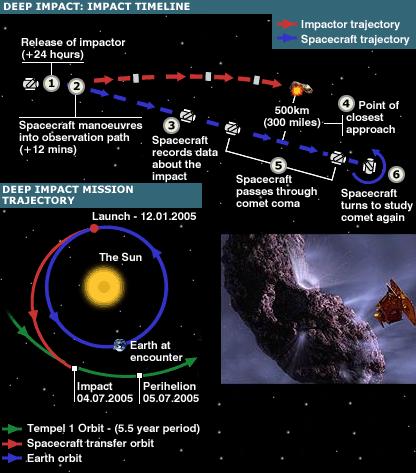
16: 00 Update
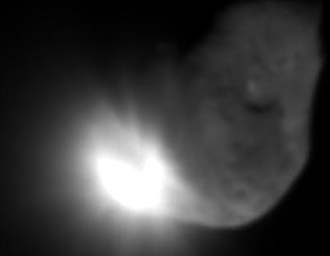
This image was taken from the mother spacecraft with a medium resolution camera, and shows the initial ejection from comet Temple-1, a total of 16 seconds after impact.
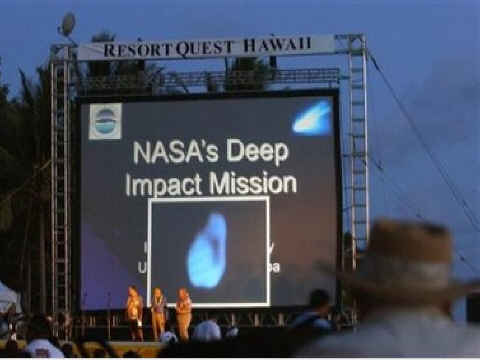
Over 10,000 people gathered on Waikiki Beach in Hawaii to watch the action on a giant screen.
15: 00 Update
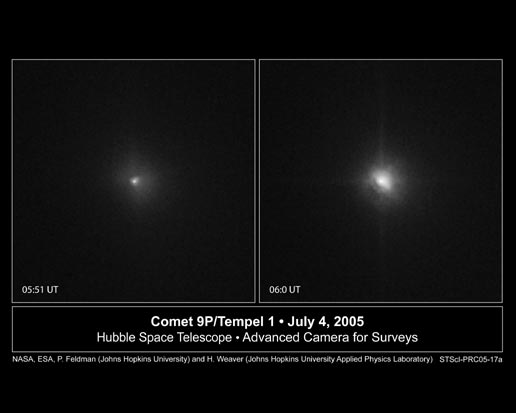
The image of the flash after the Impactor crash, as obtained from the Hubble Space Telescope:
12: 09 Update
"There's a comet in the sky wondering what the hell hit it" - Charles Alachi
At 11:15 Israel time (4:15 EDT) a press party was held on behalf of NASA. Among the main speakers were Charles Elachi (Elachi) - director of the Jet Propulsion Laboratory (JPL), Michael P. A'Hearn (A'Hearn) - Principal Investigator, Rick Grammier (Grammier) - Project Manager, and Deputy Program Manager - Kior Patel (Patel).
Germia said that the Impactor hit the target exactly, and that the mission worked exactly on time. In his speech, he thanked the entire task force. In addition, Gramia presented a video composed of still images, which showed in an accelerated manner the approach to the comet, up to a distance of a few meters from it.
The next speaker, Patel, said that Flyby, the transit spacecraft, is performing excellently, and that it positioned itself exactly where it was designed after the impactor collided with the comet, and entered "shield mode" - a mode in which it protects its sensitive instruments from the dust particles in the comet's mantle.
The main questions asked from the audience of journalists were about the created crater and its consequences. The collision caused a flash that was measured in many telescopes in the world as a brightening of 2 magnitudes. We are not sure when the flash created by the collision with the comet was known, but it is believed that in one of the next few days. In addition, it seems that even after 45 minutes of the collision, material continued to come out of the resulting crater, and it is believed that it continues to come out until now. Despite the size of the flash, no NASA scientists can currently give data regarding the composition of the material coming out of the crater, and it is possible that these data will be given at the next press conference, which will be held later today. When asked if they expected the shape of the comet to be different, they answered that they had seen the general shape of the comet in the spectroscopic tests, but could not identify it with certainty. When Germia was asked what message NASA was trying to send to the world by crashing into a comet on the Fourth of July (US Independence Day), he stammered that there was no message, but a scientific goal, and that the mission was carried out according to the clock, even though many believed it would not succeed. According to him, in doing so they overcame many obstacles.
11: 10 Update
Seniors' words
The Flyby spacecraft was supposed to come out of shielded mode and turn toward Earth to send images to mission scientists, said flight software engineer Ann Ellison.
Don Yeomans, a co-investigator on the mission, said that Flyby's extended observations are just as important as the Impactor's latest photographs. The spacecraft's cameras and spectrometers will now look at the Tempel 1 ejecta to study its composition.
"The big question is how we made such an explosion," Yeomans says of the collision. "Now we can look at the material that comes to the surface, which is what our spectroscopy people hope to do (in infrared)."
Update 9:00 [another update at 10:40]
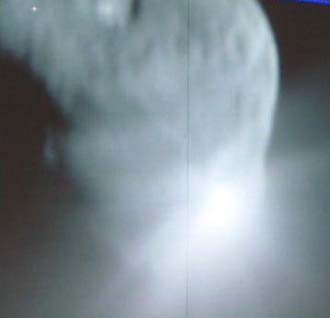
At approximately 8:52 a.m., Israel time (1:52 a.m. EDT), the 373 kg impactor hit Comet Tempel-1. To help gather the information, more than 60 observatories around the world, the large space telescopes, and even the Rosetta probe, which is on its way to another comet, watched the collision. As expected, the comet did not change its course following the collision, but only became noticeably brighter in the place where it was hit.
Even before the impact with the comet, ground images were taken with the highest resolution so far of the crater where the impactor crashed.
NASA TV is now showing the last images taken before the collision, and the images taken after it, after being processed.
NASA scientists are now analyzing the information coming from the flyby spacecraft in order to know the size of the created crater, and what material was emitted from it. Most of the information sent from the transit spacecraft is stored in it until after the impactor's encounter with the comet, and is sent after it. When asked about this, mission manager Michael A'Hearn replied that "We have one opportunity lasting 800 seconds to collect all the important information from the collision before we pass the comet."
08: 20 Update
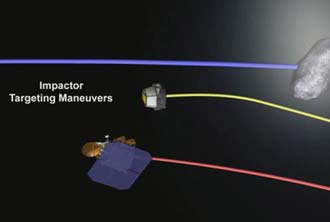
The impactor's slave navigation system has completed the first planned maneuver to align towards the orbit of comet Temple-1. The impactor has two more opportunities to refine its flight path before the planned collision with the comet at approximately 08:52.
Update Monday, 07:30
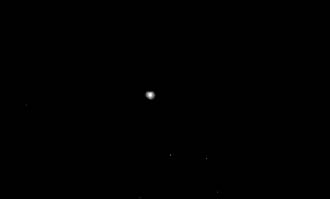
Comet Temple 1 as photographed from the impactor (the "projectile"). The photo was taken one hour and 37 minutes after the impactor was released from its mother spacecraft that will record the events. (Sunday, 3/7 10:44 am Israel time).
Update Sunday 3/7/05, 23:00 p.m
The Deep Impact spacecraft launched the projectile into a collision course with a comet millions of kilometers from Earth. The "impactor" projectile weighing 372 kg will crash into Comet Temple-1 this morning (4/7) at 08:52 Israel time.
Deep Impact will collect data on the collision and cause Earth, which is 133 million kilometers away.
Comets are snowballs and rocks that come from the outer regions of the solar system. Some of them entered an elliptical cyclic orbit that sometimes brings them close to the sun and sometimes they move away from it in a kind of loops.
Like the other comets, Temple-1 also includes a core composed of the primary material that was common during the formation of the solar system. The kernel is hidden under a large outer shell.
The crash is expected to create a crater over 25 meters deep and about 100 meters in diameter and spew out ice, dust and gas, thus exposing the primordial core materials.
The Hubble, Spitzer, Chandra and XMM Newton space telescopes will be aimed at observing Temple-1 at the time of the crash, as well as many ground-based telescopes around the world (although in Israel, in the relatively late morning there is no chance to observe the event).
The mission may provide data for strategies being developed to repel comets that may one day hit Earth.
"If you're worried about comets hitting the Earth, it's easier to change something's trajectory if you know what might change its trajectory." says Dr. Mick Ohern, the lead researcher in the Deep Impact project.
This week, astronomers got a sort of precursor to the expected pyrotechnics when the nucleus of comet Temple-1 emitted a short-lived plume of particles and gas. This eruption occurs when the comet heats up as it approaches the Sun.
